Just a few years ago, managing chronic conditions meant regular office visits and reactive care. Today, things look very different. Thanks to remote patient monitoring devices, providers can stay connected to patients in real-time with no waiting room required. From blood pressure cuffs to glucose monitors, these tools deliver continuous insights from home, helping clinicians catch issues early and make faster, smarter decisions.
For patients, it’s more than just convenience. Remote patient monitoring (RPM) gives them a daily view of their health and a stronger connection to their care team. As the market for these tools accelerates to $4.07 billion by 2030, the role of RPM in modern healthcare is only growing.
Ready to explore how remote patient monitoring devices can benefit your healthcare practice? Read on to discover the industry’s top 10 most common devices making waves.
1. Blood Pressure Cuff
Blood pressure cuffs are vital tools for monitoring cardiovascular health, especially for patients dealing with conditions like hypertension, diabetes, heart failure, and kidney dysfunction. The Bluetooth-enabled blood pressure cuff provides the same functionality as the traditional cuff used in a doctor’s office, with the added benefit of sending real-time data to healthcare providers. This constant data flow helps providers stay informed about their patient’s condition and make timely decisions.
Monitoring blood pressure at home helps to understand the day-to-day variations in a patient’s cardiovascular health, giving a more accurate picture than a single office reading. This daily tracking can prevent the issues of white coat hypertension, where a patient’s blood pressure spikes in the doctor’s office, or masked hypertension, where blood pressure appears normal during a clinic visit but is elevated at home. With this consistent data, healthcare providers can adjust treatments better, with advice that improves long-term health outcomes for patients.
2. Glucometer
Glucometers are essential for managing diabetes, allowing patients to monitor their blood sugar levels by applying a small drop of blood to a test strip. The device quickly provides a blood glucose reading, which is then sent to the provider in real time. This real-time monitoring enables patients and providers to adjust treatment plans based on current blood sugar levels and influencing factors like medication, diet, exercise, or stress.

For individuals with type 1 or type 2 diabetes, glucometers are indispensable for maintaining daily control over their blood sugar levels. Beyond simple measurements, continuous glucose monitoring (CGM) devices offer more comprehensive tracking. These devices continuously measure glucose levels throughout the day, providing insights into fluctuations and allowing patients to manage their condition proactively. Alerts from these devices can help patients adjust their medication or lifestyle to prevent harmful complications while giving healthcare providers more precise data to tailor care.
3. Pulse Oximeter
Pulse oximeters are non-invasive devices that measure the oxygen saturation level in a patient’s blood by attaching to the fingertip or earlobe. These devices use light wavelengths to determine how much oxygen is circulating in the bloodstream, which is critical for monitoring patients with respiratory or cardiac conditions such as COPD, asthma, and heart failure. Pulse oximeters also serve as key tools for early detection of deteriorating respiratory function during COVID-19 infections.
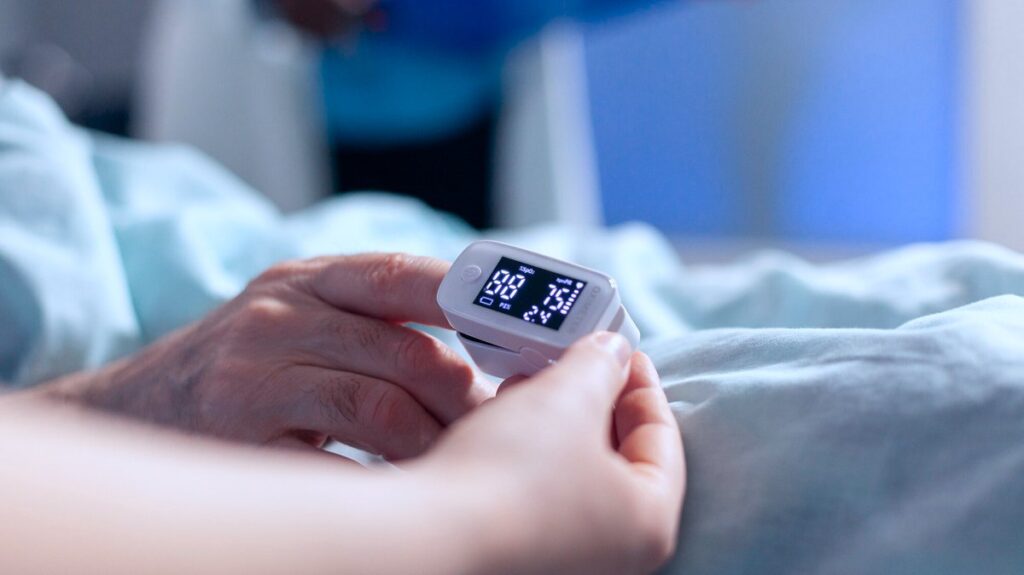
The real-time data captured by pulse oximeters can alert healthcare providers to potential problems with a patient’s lung function. For example, a drop in oxygen saturation can be a critical indicator of a worsening condition, allowing doctors to intervene before the situation becomes severe. Pulse oximeters are particularly valuable for individuals with conditions that may cause fluctuating oxygen levels, providing continuous insight that can lead to timely interventions and better overall management of health.
4. Electrocardiography (ECG) Devices
ECG devices are crucial for monitoring the heart’s electrical activity and helping identify abnormal heart rhythms or irregularities in heart function. These devices can be used at home to track heart conditions such as arrhythmias, ischemia, and myocardial infarction. Patients attach electrodes to their skin, and the ECG device records the heart’s rhythm, sending the data directly to healthcare providers for analysis.
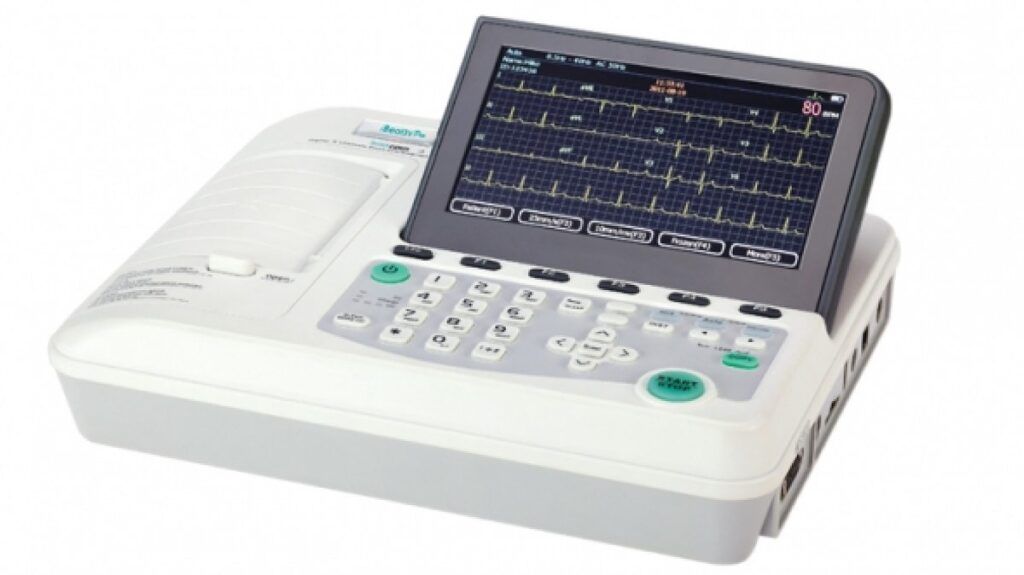
The ability to conduct ECG testing remotely allows for continuous monitoring of a patient’s heart health, even outside of the clinic. With this data, healthcare providers can quickly detect changes in heart function, enabling them to make timely decisions on adjusting medications or initiating further testing. Portable ECG devices, whether in handheld form or wearable patches, offer convenience for patients and ensure that clinicians stay informed about their patient’s heart health in real time.
5. Wearables (Activity Trackers and Continuous Monitoring)
Wearable devices, such as activity trackers and continuous monitoring patches, provide valuable insights into a patient’s daily activities and overall health. Everyday wearables, like the Fitbit or Apple Watch, track steps, heart rate, sleep patterns, and fall risk, giving healthcare providers a detailed look at how a patient’s routine affects their well-being. This continuous tracking helps providers understand the impact of physical activity, stress, and lifestyle changes on the patient’s health.
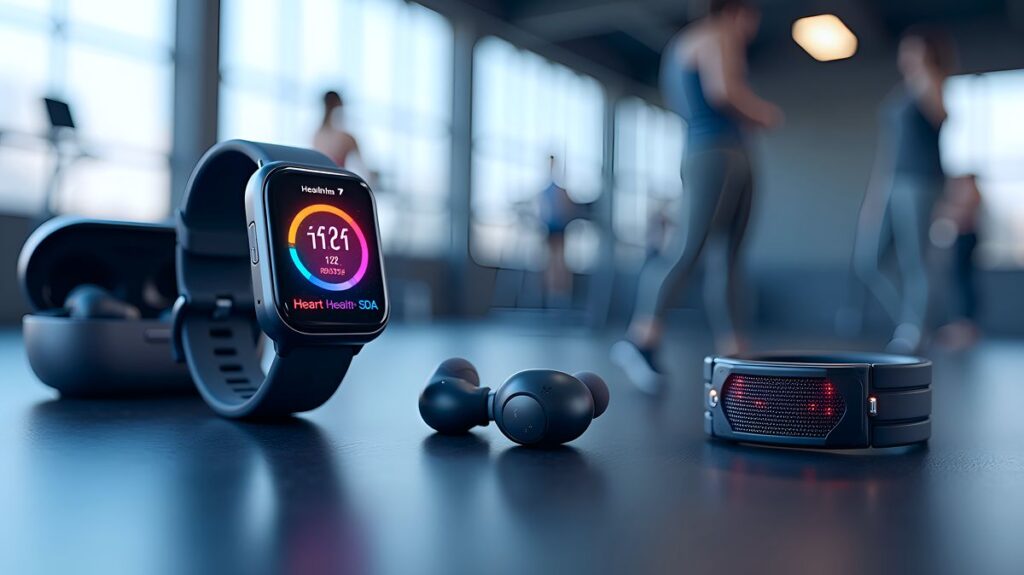
Some wearables go beyond simple activity tracking and continuously monitor multiple health indicators, including blood pressure, glucose, and heart rate. These devices provide a comprehensive view of a patient’s health, enabling proactive management of chronic conditions and ensuring timely adjustments to treatment plans. By integrating real-time data from wearables, healthcare providers can personalize care plans and track patient progress.
6. Thermometer
Bluetooth thermometers provide fast and accurate readings of a patient’s body temperature, a critical indicator for diagnosing infections or monitoring the progression of illnesses. These devices are often non-invasive and can scan the forehead or be placed under the tongue for precise readings. The real-time transmission of temperature data to the provider helps make informed decisions about whether additional medical interventions are needed.
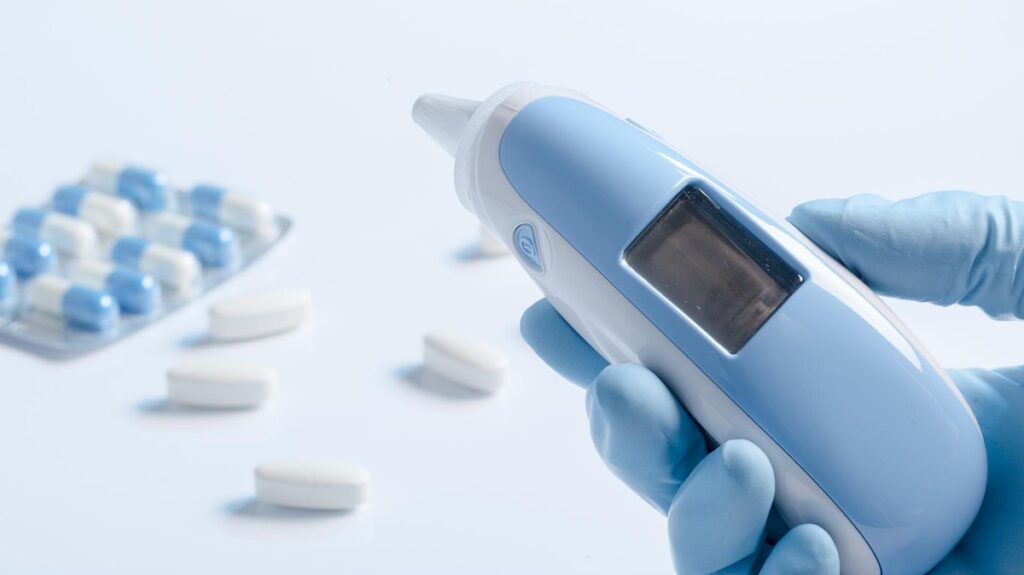
Temperature monitoring is essential for conditions like COVID-19, the flu, or other infections, where fever is a key symptom. Regular monitoring identifies fluctuations that may indicate a worsening condition or complications, prompting healthcare providers to adjust treatments or suggest further diagnostic tests. For patients with chronic conditions, fever tracking can also offer insights into the overall status of their health and the effectiveness of ongoing treatments.
7. Insulin Pump
Insulin pumps are devices designed for individuals with insulin-dependent diabetes, providing continuous insulin delivery to maintain blood glucose levels within a target range. These pumps mimic the natural function of the pancreas, adjusting insulin delivery based on real-time glucose readings, meals, and physical activity. By providing a more consistent insulin flow, insulin pumps help prevent blood sugar fluctuations that can lead to complications.

Unlike traditional insulin injections, insulin pumps offer greater flexibility and precision in diabetes management. Patients can monitor and adjust their insulin levels throughout the day, reducing the risks associated with under or overdosing on insulin. Additionally, the ability to continuously track insulin levels and glucose readings makes it easier for healthcare providers to monitor treatment effectiveness and make adjustments as needed.
8. Heart Rate Monitors
Heart rate monitors are wearable devices that track a patient’s heart rate in real-time. Commonly worn on the wrist or chest, these devices measure the number of heartbeats per minute and transmit data to healthcare providers for analysis. Tracking vital information on heart health for patients with cardiovascular conditions allows for timely intervention if an irregular heartbeat or other issues are detected.
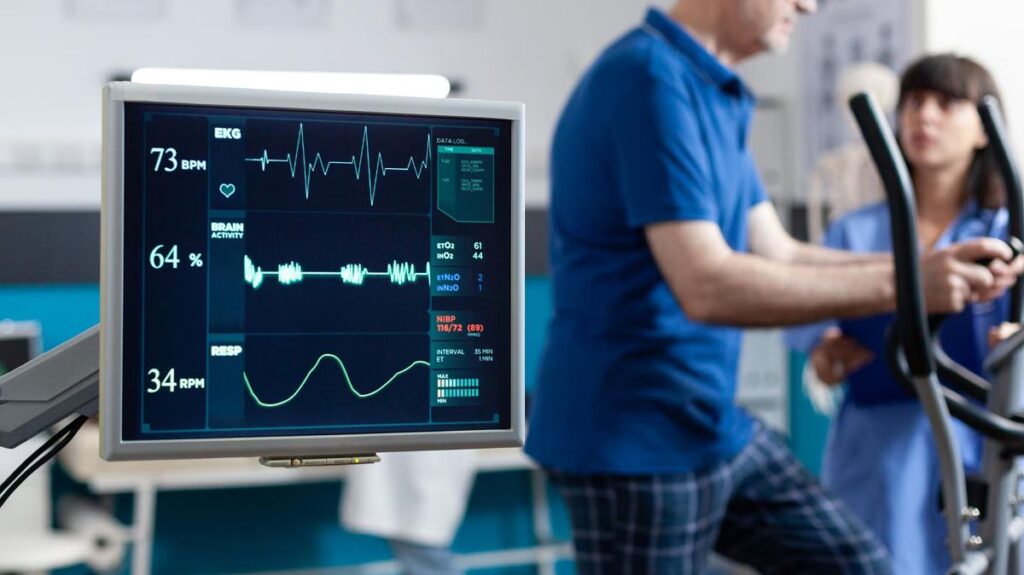
For individuals engaged in exercise regimens or those with heart conditions, heart rate monitors can assist in managing physical activity and preventing excessive strain on the heart. By continuously monitoring heart rate, these devices help patients stay within safe limits during physical activity while providing valuable data to healthcare providers to adjust treatment plans or medications.
9. Medical Alert Systems
Medical alert systems are essential for patients with chronic conditions or those at risk of sudden medical emergencies. These systems allow patients to summon help in case of a life-threatening event, such as a fall, heart attack, or stroke, by pressing a button on the device. Some systems can also automatically detect emergencies, alerting healthcare providers even if the patient cannot call for help.
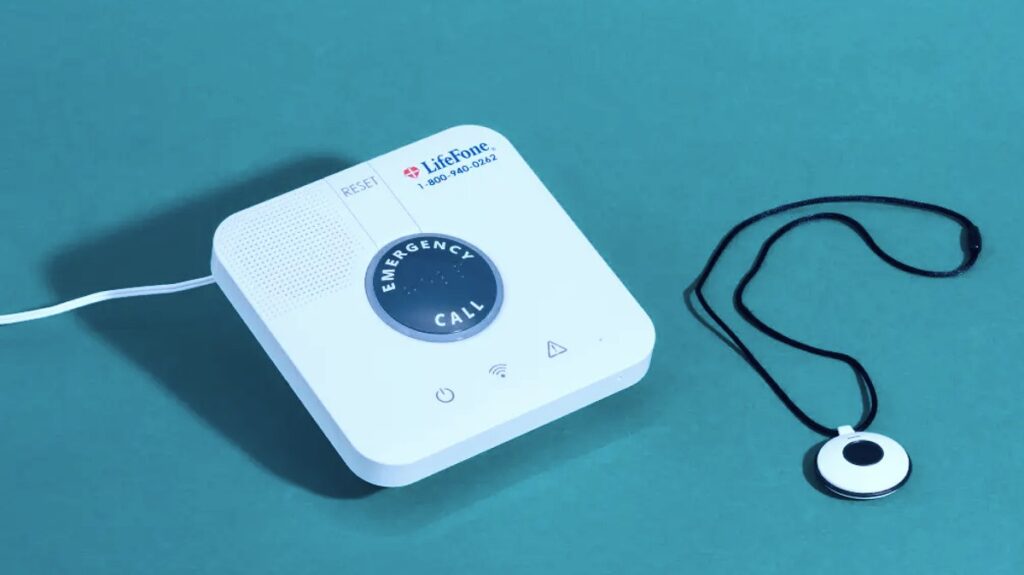
These systems offer peace of mind for patients with conditions like heart disease, diabetes, or mobility impairments, ensuring that help is always available when needed. By providing immediate medical assistance, medical alert systems can significantly reduce the risk of severe complications or death in emergency situations, improving patients’ overall safety and well-being.
10. Maternity Care Monitoring
Maternity care monitoring devices are designed to help pregnant women track various health indicators throughout their pregnancy. These devices monitor fetal heart rate, maternal blood pressure, and other vital signs, providing essential patient and healthcare provider data. In some cases, these devices can even track contractions, helping to determine the appropriate time for labor.
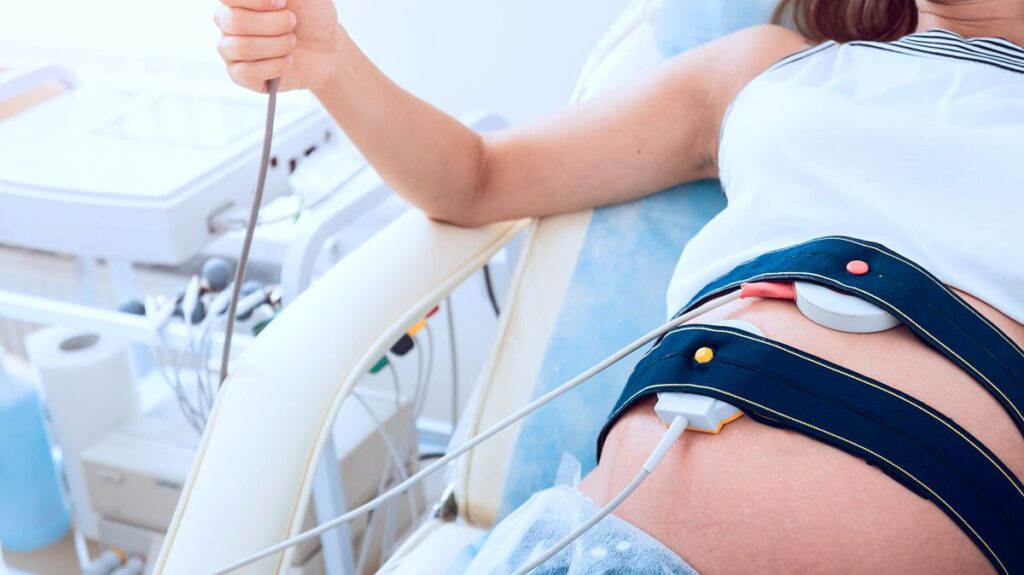
By offering continuous monitoring, these devices allow expecting mothers to manage their health more effectively and minimize unnecessary in-person visits to the clinic. For low-risk pregnancies, remote monitoring can provide a safer and more convenient way to ensure both mother and baby are in good health while enabling healthcare providers to intervene promptly if any issues arise.
Learn more: The Impact of AI on Healthcare: A Deep Dive into Remote Patient Monitoring

How To Choose the Right Remote Patient Monitoring Devices

When selecting remote patient monitoring devices for your practice, aligning these devices with your healthcare practice’s workflow is essential. Here are some steps to help you choose remote patient monitoring devices that fit seamlessly into your practice:
1. Identify Your Practice’s RPM Goals
The first step in selecting the right remote patient monitoring devices is to clearly define your healthcare practice’s goals. For many practices, remote patient monitoring devices are primarily used to manage chronic conditions. Additionally, improving medication adherence and enabling the early detection of worsening conditions are key objectives for initiating an RPM program. The success of these goals depends heavily on the type of remote patient monitoring devices you implement. When choosing the proper devices, it is also essential to consider your patient population, their needs, and demographics, such as technology comfort level and access to remote healthcare services.
2. Understand the Different Types of Remote Patient Monitoring Devices
Remote patient monitoring devices vary in functionality, and selecting the proper devices requires understanding what each device monitors. Standard devices like blood pressure monitors, weight scales, pulse oximeters, and glucometers track specific vital signs. For example, glucometers are essential for diabetes management, while pulse oximeters are invaluable for monitoring respiratory conditions. Additionally, some modern remote patient monitoring devices focus on improving medication adherence, such as pill dispensers, which use automated reminder technology to help patients stay on track with their medications.
When evaluating remote patient monitoring devices, also look at the patient engagement tools provided by the vendor. These tools facilitate data collection and communication between patients and healthcare providers, and they play a vital role in ensuring the success of your RPM program. A solid communication platform can significantly enhance patient engagement and overall care delivery.
3. Choose the Right Connectivity (Cellular or Bluetooth)
After selecting the appropriate devices, the next step is choosing the proper connectivity method: cellular or Bluetooth. Cellular remote patient monitoring devices offer a wider reach, as cellular networks are available almost everywhere. These devices are easier to use, but the higher costs associated with cellular connectivity can be a barrier for some practices.
Bluetooth devices, on the other hand, are typically more affordable and work well within existing workflows, particularly when integrated with electronic health records (EHR). While Bluetooth devices have the advantage of lower costs, one challenge is ensuring the security of the data transmitted through this connection. When choosing connectivity, consider the patient’s location, technical comfort level, and your practice’s budget.
4. Choose a User-Friendly Application
The remote patient monitoring devices you select must be user-friendly, mainly if your patient base includes older adults, tech-averse individuals, or people with disabilities. Patients should find it easy and convenient to record their vital signs regularly without viewing it as a burden. They should feel motivated to track their health data in their daily routine. Ensuring the devices are easy to use enhances patient compliance and improves patient and healthcare providers’ overall experience.
5. Ensure AI-Enabled Patient Analytics
Remote patient monitoring devices generate a wealth of data, but just collecting the data isn’t enough. Someone must be analyze data to make informed treatment recommendations or send emergency alerts when necessary. By incorporating AI-powered analytics, you can streamline the data analysis process, ensuring patient data is sorted quickly and accurately. This reduces the chances of oversight by healthcare providers and improves the timeliness of decision-making. AI analytics also enable personalized care by identifying trends and predicting potential health issues before they become critical.
6. Build Continuous Access to Health Data
For remote patient monitoring to be effective, healthcare providers need continuous access to patient data. Ensure that the devices offer real-time data transmission capabilities, enabling patients to send their vitals to their physicians daily or even hourly. This constant flow of data allows providers to monitor their patients more closely and respond to any changes promptly. With uninterrupted access to health data, physicians can provide more personalized care and intervene when necessary, leading to better patient health outcomes.
By carefully considering these steps, you can select the proper remote patient monitoring devices that align with your healthcare practice’s goals, improve patient engagement, and enhance the overall quality of care.
Build Your Custom RPM Solution with KMS Healthcare
Remote patient monitoring devices are only as effective as the systems they integrate with. At KMS Healthcare, we understand the importance of seamless integration between remote patient monitoring devices and your healthcare infrastructure.
Our team can help you design and implement a custom remote patient monitoring solution tailored to your practice’s needs, ensuring that all devices work together to deliver continuous, real-time data for improved patient care. KMS Healthcare offers tailored solutions to ensure seamless integration of remote patient monitoring devices, empowering your practice with real-time data and better health outcomes.
- Custom Patient Engagement Tools: We develop custom-to-you software that enhances patient interactions through secure messaging, appointment scheduling, and personalized health resources, helping patients engage with their health effectively.
- Seamless Integration: Our solutions ensure smooth interoperability with Electronic Health Records (EHRs) and telehealth platforms, making patient data easily accessible and improving the overall efficiency of remote patient monitoring.
- Data Security & Compliance: We prioritize building solutions that adhere to HIPAA, SOC, and HITRUST standards, ensuring that patient data is secure and maintaining trust between your practice and patients.
Ready to optimize your remote patient monitoring program? Contact KMS Healthcare today to create a custom RPM solution tailored to your practice’s needs.
